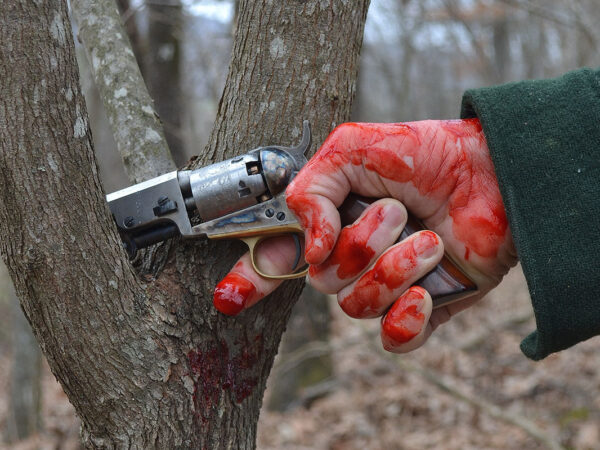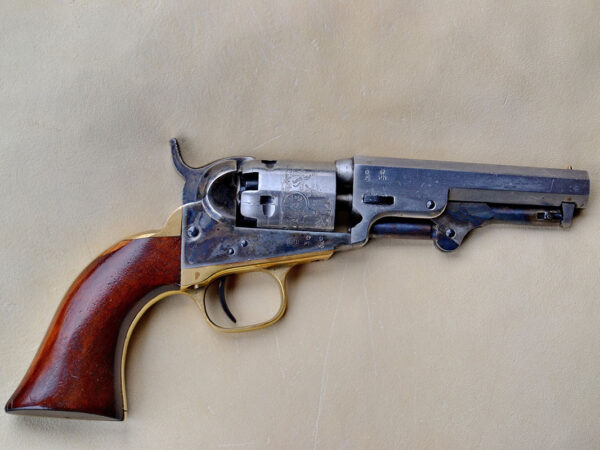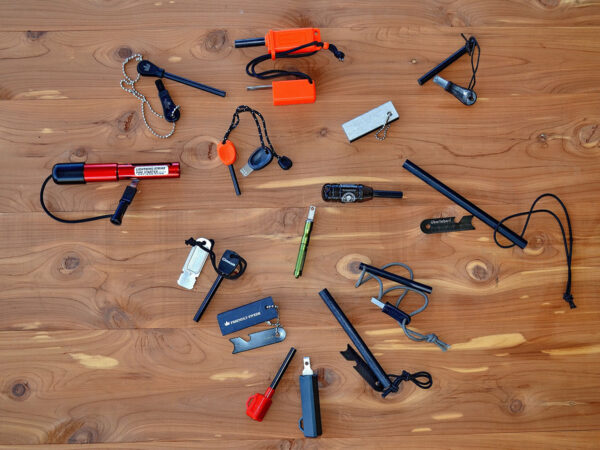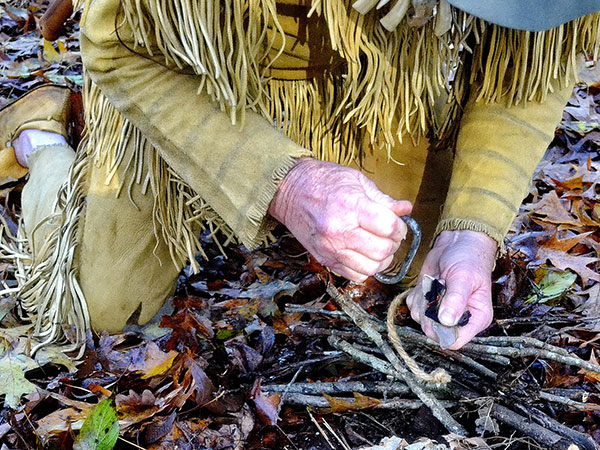Laying, looking straight up the tree, his memory returned, dreamlike, to 1871 when working as a hunter with the Hayden Expedition in the Yellowstone country he had gotten lost in a sudden snow storm. On foot, he had wandered for days without food. Tired, cold, and hungry he was laying down out of the wind next to a log in a snowless spot under a snow laden spruce. Suddenly he heard a twig snap. Peeking over the log he spotted a coyote sniffing out a blowdown just 5 yards away. The song dog, intent on his search for a meal, never saw the man. With eyes fixed on the unsuspecting coyote, Tex’s cold fingers found the gift pistol tucked in his belt. Mustering up the strength to hold the gun steady across the log he made the all-important shot – the coyote fell!
A few days later, safely back at the expedition camp; he was laughingly called the “coyote eater”. Deep inside he knew the gift pistol had once again made the difference.
“Coyote eater”, a grin came across his bloody face, “I thought it was rather good.” Then his thoughts returned to the present.




